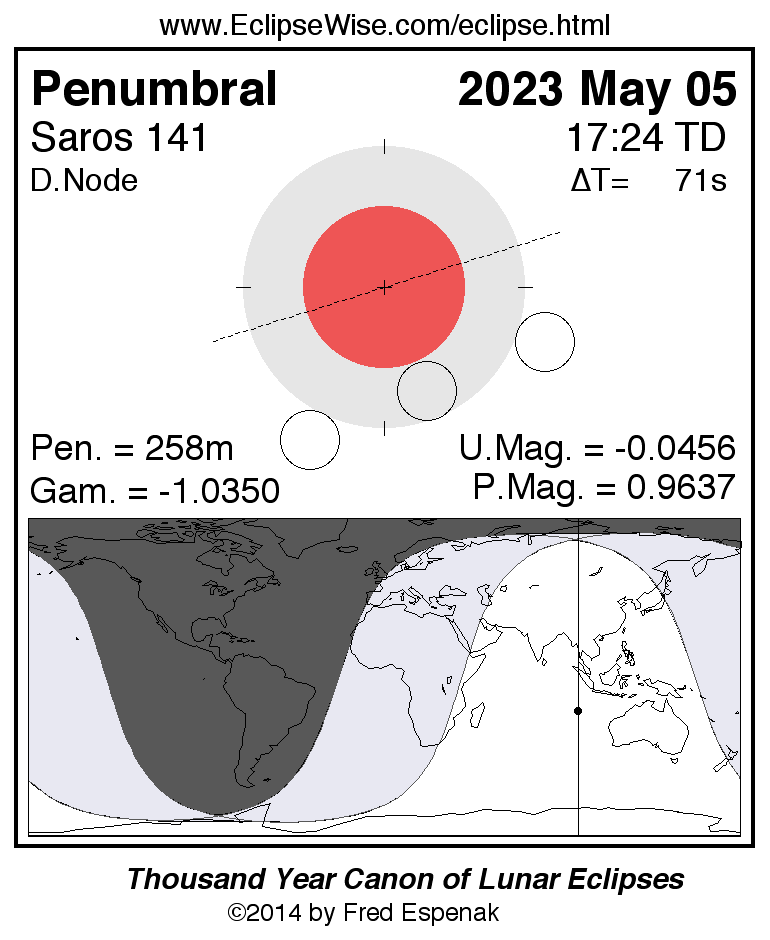Penumbral Lunar Eclipse of 2023 May 05
Fred Espenak
Key to Lunar Eclipse Figure (below)
Introduction
The Penumbral Lunar Eclipse of 2023 May 05 is visible from the following geographic regions:
- Africa, Asia, Australia
The diagram to the right depicts the Moon's path with respect to Earth's umbral and penumbral shadows. Below it is a map showing the geographic regions of eclipse visibility. Click on the figure to enlarge it. For an explanation of the features appearing in the figure, see Key to Lunar Eclipse Figures.
The instant of greatest eclipse takes place on 2023 May 05 at 17:24:04 TD (17:22:53 UT1). This is 5.5 days before the Moon reaches perigee. During the eclipse, the Moon is in the constellation Libra. The synodic month in which the eclipse takes place has a Brown Lunation Number of 1241.
The eclipse belongs to Saros 141 and is number 24 of 72 eclipses in the series. All eclipses in this series occur at the Moon’s descending node. The Moon moves northward with respect to the node with each succeeding eclipse in the series and gamma increases.
This is a very deep penumbral eclipse. It has a penumbral eclipse magnitude of 0.9655 and a penumbral eclipse duration of 258.3 minutes. Gamma has a value of -1.0350.
The penumbral lunar eclipse of 2023 May 05 is preceded two weeks earlier by a hybrid solar eclipse on 2023 Apr 20.
These eclipses all take place during a single eclipse season.
The eclipse predictions are given in both Terrestrial Dynamical Time (TD) and Universal Time (UT1). The parameter ΔT is used to convert between these two times (i.e., TD = UT1 + ΔT). ΔT has a value of 70.9 seconds for this eclipse.
The following links provide maps and data for the eclipse.
- Detailed Lunar Eclipse Figure - eclipse geometry diagram and map of eclipse visibility (Key to Figure)
- Saros 141 Table - data for all eclipses in the Saros series
The tables below contain detailed predictions and additional information on the Penumbral Lunar Eclipse of 2023 May 05 .






